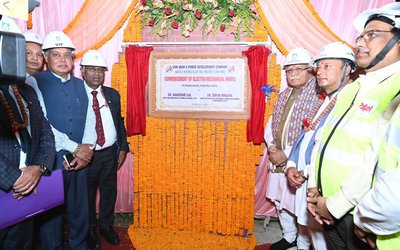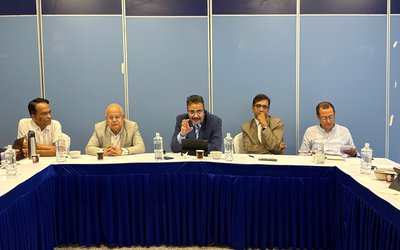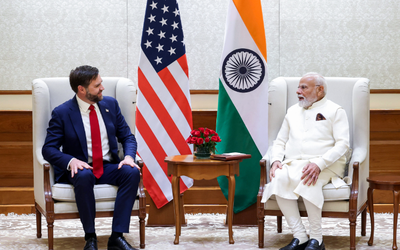
Beneath the diplomatic handshakes and signed agreements during India’s foreign minister Dr. S. Jaishanker’s recent Kathmandu visit, a chilling question lingers: will Nepal’s glacier-fed rivers, the lifeblood of millions, become India’s pipeline? Recent studies have shown that Himalayan glaciers are melting at unprecedented rates, and if global warming is not controlled, they could lose up to 80% of their volume by the end of the century.

The Himalayan glaciers, the “Water Towers of Asia,” are melting at an alarming rate, transforming water security into a geopolitical and climate flash point. The melting of glaciers in the Himalayas has already led to a water crisis in South and Southeast Asia, and the situation is likely to worsen in the future. India’s interest in regulating Nepal’s river is not new, but with the depleting glaciers, India’s interest in regulating river flow has grown. Man Bahadur Gurung, of Thasang Village, a Lower Mustang farmer, speaks for many when he asks, ‘Will our once-gushing Kali Gandaki river, shrinking glaciers, quench downstream thirst while leaving us parched?” This anxiety is not unfounded, it’s a blunt reality for those who witness the lifeline of over 2 billion people across 11 nations, those that depend on Himalayan glacier-fed rivers, dwindling before their eyes.
The specter of the 1996 Mahakali Treaty, a controversial water-sharing agreement, casts a shadow over the present. The mere mention of “regulation” evokes an instinctual reaction in Nepal, reviving memories of past power imbalances and opaque negotiations. These historical wounds have left a reservoir of mistrust, threatening to derail any prospect of harmonious cooperation.
Despite this, the recently concluded 28th Conference of Parties (COP-28) in Dubai, UAE, echoed an urgent call to action against the rapid melting of the Himalayan glaciers. This phenomenon threatens the very existence of mountain communities, and water security for billions, and threatens as a potential trigger for conflicts.
The UN Secretary-General, António Guterres, and Nepal’s Prime Minister, Puspha Kamal Dahal, amplified the cry of help for the melting glaciers, emphasizing the interconnectedness of mountain and low land communities in the global fight against human-induced climate change.

However, the simple power imbalance between India, an emerging regional power with economic and military might, and Nepal, landlocked and still a Least Developed Country(LDC), further complicates the equation. This imbalance evokes the old adage in international relations: “The rich and the powerful do what they want, the weak and the poor do what they must” resonates uncomfortably in this context. It fuels anxieties about exploitation and deepens the cracks in an already delicate relationship.
In spite of these challenges, there are opportunities of collaboration. Agreements on electricity imports and infrastructure, while important and significant, are merely temporary bridges. The path toward a sustainable future lies in embracing regional collaboration, guided by three principles: climate action, sustainable water management, and transparent agreements. These principles are essential in mitigating the impact of melting glaciers, managing the water crisis effectively, and rebuilding trust through open dialogue and equitable sharing agreements.
The Himalayas stand at a crossroads, with 3 declared nuclear powers with the world’s largest armies surrounding it. Will they become a battleground for resources, reflecting fractured relations and a desperate scramble for survival? Or will they emerge as a symbol of shared resilience, a testament to the power of collaboration in the face of a shared crisis? The answer lies in the choices we make today.

Arup Rajouria
is an internationally recognized expert in climate change and natural resources management, with an impressive career at renowned organizations such as the former CEO of NTNC's CEO, UNDP, UN-Habitat, UNEP, and USAID. He obtained an MPA degree from Harvard
- 2024: A Year Of Missed Opportunities- A Call For Transformative Climate Action In 2025
- Dec 31, 2024
- Himalayan Meltdown: Threat Beyond Borders
- May 10, 2024
- A Cry From The Himalayas: Echoes Of Hope And Compromise At COP-28
- Dec 21, 2023
- Climate Crisis: Can world Leaders Rise to the Challenge ?
- Nov 17, 2023
- Conflict Diverts Attention: How the Hamas Israel Crisis Affects Climate Priorities At COP 28
- Oct 28, 2023














